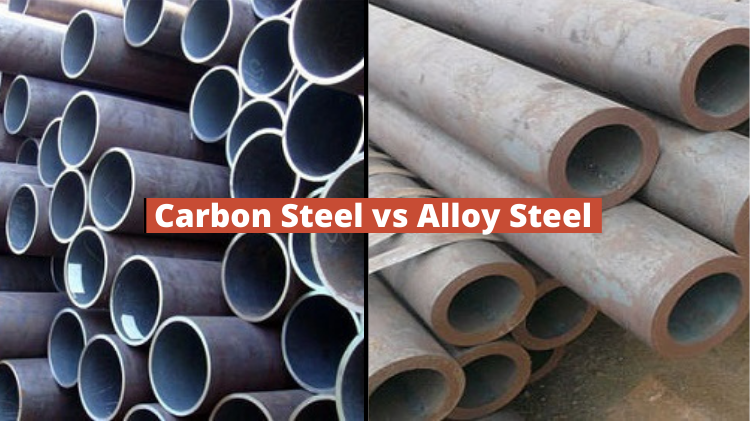How Does Carbon Steel Differ from Alloy Steel?
by Jessica
Posted on 28 August, 2022 at 2:20 PM

Both kinds of steel have between 0.02% and 2.1% carbon, so why is carbon steel a type of steel? Most of the time, the term "carbon steel" refers to two different kinds of steel: carbon steel and low alloy steel. In contrast, alloy steel is a type of steel alloy that has been made to resist corrosion. In this article, we look at how carbon steel and alloy steel are the same and different.
Alloy Steel
Before, everyone knew for sure about stainless steel. It's the best stuff for cooking, like pots and pans. An alloy is a mix of two or more types of metal. Today, we'll talk about alloy steel, which is another type of alloy. This is a type of steel that has different amounts of manganese, iron, nickel, titanium, copper, chromium, and aluminium added to it. The main difference between stainless steel and alloy steel is that alloy steel is made of materials that are similar to nickel and copper.
Manganese makes steel better at high temperatures because it stops unwanted things from growing, especially iron sulphide. Nickel and copper make the steel stronger and harder, and they also keep it resistant to corrosion and oxidation. Copper is used in very small amounts, but it often makes a material stronger and more resistant to corrosion. Some impurities, like austenite rocks, can't grow or form because of aluminium. Chromium is an important material for making alloys because it protects against corrosion and wear and tear. This also makes steel harder, since it hardens very well when heated.
There are two kinds of alloy steel: high and low alloy steel. Low-alloy steel usually has between 1% and 5% alloy, based on the quantity of alloying components. Low levels of alloying elements are present in high alloy steel. And the most well-known type of high alloy steel is stainless steel. Because the amount of chromium varies, there are different kinds of stainless steel. There is at least 12 percent chromium, and depending on how the steel is used, it can go up to 27 percent.
Carbon Steel
Another type of steel to be utilised in this item is carbon steel. The primary component of this kind of steel is carbon, not iron. The metal will harden more quickly when heated the more carbon it has. There is also low, medium, and high carbon steel available. In low carbon steel, the carbon concentration does not approach 0.25 percent when paired with 0.4 percent manganese. Because they can easily be moulded, they can be utilised in a variety of applications and are the least expensive carbon steel. Medium carbon steel has a fixed carbon content of 0.54 percent and a manganese concentration of 1.65 percent. This type of steel is heavier and more resistant to wear because of the higher carbon content. This lessens their capacity to form rapidly, though. whereas high carbon steel has up to 0.9% carbon.
Because it is the toughest and most challenging to build, this form of carbon steel is only utilised in situations when it is truly necessary. Knives, tubes, and pipes are only a few examples of its usage. Chemistry enthusiasts would be aware that the various forms of carbon are actually quite solid. The hardest material on earth, diamonds, are comprised of carbon. This may help you to comprehend why, when carbon and iron are united, it is strong enough on its own without the help of any other substances.
Let's examine the differences between carbon steel and alloy steel now that we have a firm understanding of carbon steel. The composition is somewhat remote from one another. Up to 2.1% of the composition of carbon steel contains iron. Any additional component found in this type of steel is referred to as an impurity.
However, alloy steel cannot increase its qualities without the necessary elements being added. As a result, the alloy steel is heavier, more tensile-strengthening, and less prone to corrosion. The lifespan of alloy steel increases with the quality of the alloying ingredients. On the other hand, the tougher and less useful the steel is, the higher the carbon content. Nevertheless, carbon steel receives a two in the quality category. Given its reduced carbon content, carbon steel is considerably less expensive. Due to the added alloy elements and their quantity, alloy steel can become highly expensive.